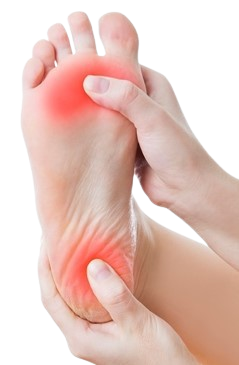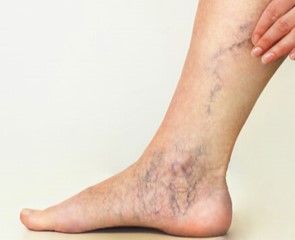Diabetic Foot Treatment in Ghaziadbad
Nivaran Health is one of the best diabetology clinic for diabetic foot treatment in Ghaziabad. Dr Ayush Chandra, the Founder of Nivaran Health, is well-known for managing diabetes and diabetes-related complications. He has received special training in Diabetic Foot Care, which enables him to offer high-quality care to his patients. These qualities make him one of the best doctors for the diabetic foot treatment in Ghaziabad.
If you’ve diabetes, having excessive glucose in your blood for a very long time can result in some serious complications, including foot problems.
Dr Ayush Chandra is among the best diabetologist in Ghaziabad, with 11+ years of overall experience in Healthcare management and clinical practice and 3+ years as a specialist in Diabetes management. Besides, his areas of interest include chronic diabetes, endocrinal disorders, and gestational diabetes.
Read on to learn about , diabetic foot treatment in Ghaziabad and more.
But what exactly is Diabetic foot? Let’s find out!
How Can Diabetes Affect My Feet?
Diabetes has many complications related to the eyes, heart, kidneys, etc. But the most common and threatening complication is a diabetic foot. The maximum number of hospital admissions in people with diabetes are due to foot problems and not because of heart and kidney ailments.
Diabetes-related foot problems are widespread and negatively impact patients’ quality of life. Therefore, healthcare professionals must be aware of symptoms and the relevant care pathways for diabetic patients to ensure they receive the best care and education regarding managing their diabetes.
As a highly regarded expert in metabolic health, Dr. Chandra is a go-to specialist for treating Diabetes in Ghaziabad.

Let’s explore the most common signs and symptoms of Diabetes.
Signs and Symptoms of Diabetic foot problems
Symptoms may vary from patient to patient and may depend on what problems a person is suffering from at the time. Some of the signs of diabetic foot problems can include:
- Loss of sensation
- Numbness or tingling sensation
- Painless blisters or other wounds
- Skin discolouration
- Skin temperature changes
- Red streaks
- Wound with or without drainage
- Deformed foot appearence
- Painful tingling

If an infection or ulcer occurs in the foot, a person may also experience some of the following symptoms:
- Uncontrolled blood sugar
- Fever
- Shaking
- Shock
- Redness
- Chills
If you experience any of the symptoms of an infection, you should seek emergency treatment from Dr. Ayush Chandra
Common Foot Problems with Diabetes
Diabetic Neuropathy:
Over time, diabetes can cause nerve damage, making it hard for diabetic people to feel sensations in their extremities. The condition also makes it challenging for people to feel irritation on their foot or notice their shoes are rubbing. This lack of feeling and awareness leads to an increased risk of developing sores, cuts, and blisters..

Peripheral Vascular Disease:
Diabetes causes variations in the blood vessels, including the arteries. In peripheral vascular disease, fat deposits block the blood vessels beyond the brain and heart. It does affect the vessels leading to and from the extremities, decreasing circulation to the hands and feet. Reduced circulation may cause pain, infection, and slow healing of wounds. Severe conditions may cause amputation.

Types of Diabetic Foot Treatment
Diabetic foot treatment depends on the severity of the condition. A variety of non-surgical and surgical treatments are available.
1. Non-surgical treatment
Non-surgical options are usually the initial mode of treatment for diabetic foot issues. Some of these are:
- keeping the wounds clean and covered
- immobilization devices like cast boot or total contact cast
- proper observation of gangrene toes till self-amputation happens, when the toes fall off due to lack of blood circulation
2. Surgical treatment
When non-surgical options fail to treat diabetic foot problems, your physician may opt for surgery. Surgical treatments include:
- removal of decaying or dead tissue
- amputation, ranging from toe or portion of the foot to amputation of the limb below or above the knee in some instances
- surgical stabilization of Charcot’s Foot
- arterial bypass for peripheral vascular disease, or endovascular surgery placing stents
Podiatry Care:
We offer essential podiatry (Foot) Care for removing corns, callous, nail cutting, nail trimming, and corn shaving. All the instruments are made from high-quality stainless steel, which is sterilized.

Neuropathic Assessment Tools:
Peripheral neuropathy (Loss of Sensation) is the prime pathogenic ingredient for diabetic foot ulceration. Ulceration is the crucial factor that may precipitate, leading to lower-extremity amputation.
TIP THERM is an early diagnostic device for symmetrical polyneuropathy. It measures the skin's temperature sensitivity.
VIBRATIP is a device resembling a tiny key fob used when testing a person’s vibration perception during a routine check-up for diabetic peripheral neuropathy (DPN) in people who have type 1 or type 2 diabetes.
Monofilaments are an effective, convenient, easy to use, relatively inexpensive way of testing for loss of protective sensation in the feet in daily clinical practice.


Handheld Vascular Doppler :
It detects blood flow using the principles of the Doppler effect. ABI Doppler is a painless test and very similar to taking blood pressure using a stethoscope. It is beneficial for the assessment of Ankle Brachial Index Study & Arterial and Venous blood flow examination. This device is coming soon.

Digital Biothesiometer -VPT :
Vibration perception threshold (VPT) is beneficial in foot ulceration and in identifying peripheral sensory neuropathy. Sensory neuropathy increases the risk of foot ulcerations by seven-folds and peripheral arterial disease (PAD) by three folds in diabetic people. This device is coming soon.

Prevention of Diabetic Foot Problems
Preventing diabetic foot problems is essential for people who have diabetes. Keeping feet healthy is necessary, and a person should be vigilant about foot hygiene. They can take the following steps:
- Check your feet each day
- Wash feet every day
- Wear supportive socks and shoes
- Promote blood flow to the feet
- Trim nails carefully
- Look for corns and bunions
- Protect feet from extreme temperatures
- Receive regular examinations on the feet
- Control blood sugar
- Avoid smoking or any other form of tobacco
Reach out to Dr. Ayush Chandra, your trusted Diabetic Foot Specialist in Ghaziabad, for personalized treatment. Your feet deserve the best care!
Complications Associated with Diabetic Foot Problems
Closely monitor critical conditions like diabetic neuropathy and peripheral vascular disease. Both cause complications that can have adverse effects. Some of these complications include:
- slow or non-healing foot ulcers, or wounds
- skin infections, bone infections, and abscess
- gangrene, when a disease leads to tissue death
- Charcot’s Foot
- foot deformity
Dr. Chandra’s expertise in diabetes and metabolic health makes him a trusted choice for Diabetes treatment in Ghaziabad, which can also significantly improve overall health outcomes.
Why Choose Nivaran Health for Diabetes Treatment in Ghaziabad?
Consider Nivaran health for:
Nivaran Health is a well-equipped clinic specializing in the prevention, diagnosis, and treatment of diabetes.
Our clinic provides a perfect blend of advanced treatment with a comprehensive approach towards the whole well-being of diabetic patients.
Besides Dr. Ayush Chandra, a qualified diabetologist in Delhi, our clinic has a super-specialist doctors’ team.
At Nivaran Health, we offer cost-efficient health packages for diabetes wellness, diabetes foot screening, pregnancy wellness, obesity control, and many more.
Confidential and Compassionate Service:

Don’t let diabetic foot issues slow you down. Take control of your health today with expert care at Nivaran Health.
Taking that first step to understand and treat it can be life-changing.
FAQ'S
Your diabetologist will brush a soft nylon fibre called a monofilament over your foot and toes to check your foot’s sensitivity. Your diabetologist will place a tuning fork or other devices against your foot and toes to check if you can feel the vibration it produces.
Ulcer healing takes weeks or months, and one-third of ulcers never heals and leads to amputation.
Use unscented lotion or petroleum jelly (Vaseline) on your feet. Diabetes can cause dehydrated skin, which in turn can cause cracking and other problems. But remember, don’t apply lotion or Vaseline between your toes.
Walking, running, biking, swimming, and aerobics are good options. It can help improve your blood circulation into your legs and feet. Most importantly, ensure that you’re moving your feet, toes, ankles, and legs. Quit smoking as it hardens your arteries and decreases your circulation.

